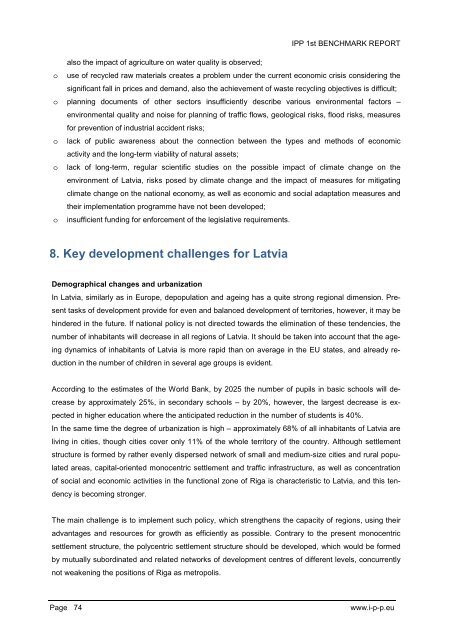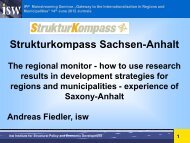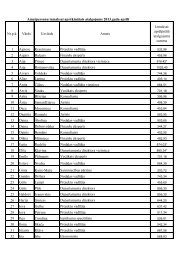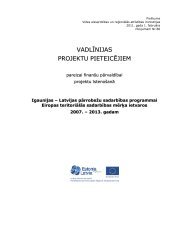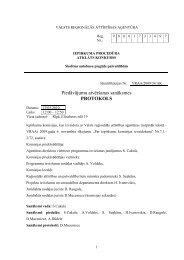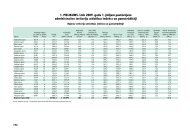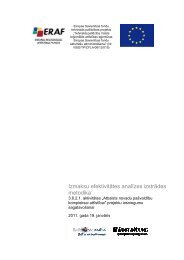Benchmark Study 1
Benchmark Study 1
Benchmark Study 1
You also want an ePaper? Increase the reach of your titles
YUMPU automatically turns print PDFs into web optimized ePapers that Google loves.
IPP 1st BENCHMARK REPORT<br />
also the impact of agriculture on water quality is observed;<br />
o use of recycled raw materials creates a problem under the current economic crisis considering the<br />
significant fall in prices and demand, also the achievement of waste recycling objectives is difficult;<br />
o planning documents of other sectors insufficiently describe various environmental factors –<br />
environmental quality and noise for planning of traffic flows, geological risks, flood risks, measures<br />
for prevention of industrial accident risks;<br />
o lack of public awareness about the connection between the types and methods of economic<br />
activity and the long-term viability of natural assets;<br />
o lack of long-term, regular scientific studies on the possible impact of climate change on the<br />
environment of Latvia, risks posed by climate change and the impact of measures for mitigating<br />
climate change on the national economy, as well as economic and social adaptation measures and<br />
their implementation programme have not been developed;<br />
o insufficient funding for enforcement of the legislative requirements.<br />
8. Key development challenges for Latvia<br />
Demographical changes and urbanization<br />
In Latvia, similarly as in Europe, depopulation and ageing has a quite strong regional dimension. Present<br />
tasks of development provide for even and balanced development of territories, however, it may be<br />
hindered in the future. If national policy is not directed towards the elimination of these tendencies, the<br />
number of inhabitants will decrease in all regions of Latvia. It should be taken into account that the ageing<br />
dynamics of inhabitants of Latvia is more rapid than on average in the EU states, and already reduction<br />
in the number of children in several age groups is evident.<br />
According to the estimates of the World Bank, by 2025 the number of pupils in basic schools will decrease<br />
by approximately 25%, in secondary schools – by 20%, however, the largest decrease is expected<br />
in higher education where the anticipated reduction in the number of students is 40%.<br />
In the same time the degree of urbanization is high – approximately 68% of all inhabitants of Latvia are<br />
living in cities, though cities cover only 11% of the whole territory of the country. Although settlement<br />
structure is formed by rather evenly dispersed network of small and medium-size cities and rural populated<br />
areas, capital-oriented monocentric settlement and traffic infrastructure, as well as concentration<br />
of social and economic activities in the functional zone of Riga is characteristic to Latvia, and this tendency<br />
is becoming stronger.<br />
The main challenge is to implement such policy, which strengthens the capacity of regions, using their<br />
advantages and resources for growth as efficiently as possible. Contrary to the present monocentric<br />
settlement structure, the polycentric settlement structure should be developed, which would be formed<br />
by mutually subordinated and related networks of development centres of different levels, concurrently<br />
not weakening the positions of Riga as metropolis.<br />
Page 74<br />
www.i-p-p.eu


